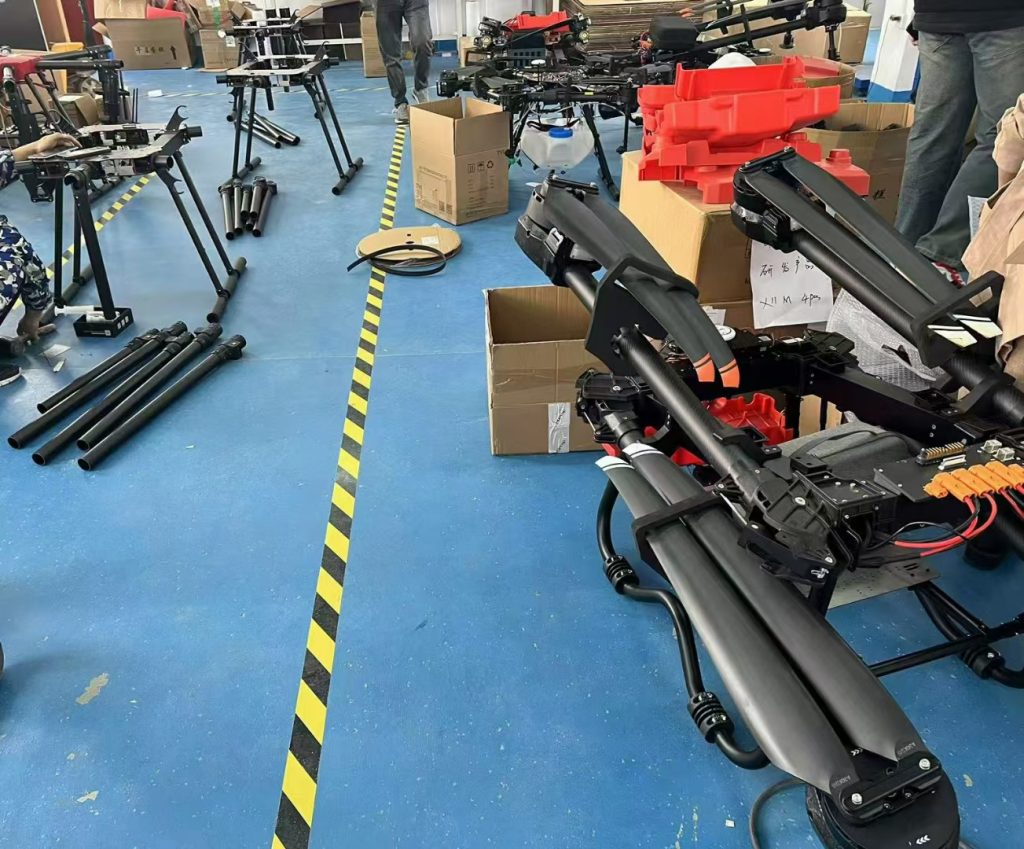In industries ranging from agriculture to urban maintenance, nozzle-clogging remains a persistent challenge, leading to costly downtime, wasted resources, and reduced operational efficiency. Enter self-cleaning nozzle drones—an innovative fusion of robotics, fluid dynamics, and smart materials. These drones are engineered to autonomously clear debris, prevent blockages, and maintain peak performance, even in harsh environments. By eliminating manual intervention, they redefine reliability in tasks like pesticide application, industrial cleaning, and infrastructure decontamination. This article explores how self-cleaning nozzle drones work, their transformative applications, and their potential to reshape industries reliant on precision spraying and fluid delivery.
—
1. What Are Self-Cleaning Nozzle Drones?
Self-cleaning nozzle drones are advanced UAVs equipped with nozzles integrated with automated cleaning mechanisms. These systems use technologies such as:
– Ultrasonic vibrations: Break down dried residue on nozzle surfaces.
– Pulsed air jets: Remove debris without external water sources.
– UV-C sterilization: Eliminate organic buildup (e.g., algae, mold) in water-based systems.
– Self-adjusting brushes: Sweep away particulates during operation.
Unlike traditional drones requiring frequent manual cleaning, these drones perform self-maintenance mid-task or post-operation, ensuring consistent spray patterns and minimizing waste.
—
2. How Self-Cleaning Technology Works
The core innovation lies in integrating cleaning mechanisms directly into the nozzle design:
1. Real-Time Monitoring: Sensors detect clogs by measuring flow rate or pressure changes.
2. Activation of Cleaning Cycle: The drone triggers its cleaning protocol (e.g., ultrasonic pulses) to dislodge debris.
3. Resource Efficiency: Some models recycle water or cleaning agents, reducing consumption.
For example, a pesticide-spraying drone in a vineyard might use UV-C light to sterilize its nozzle after each pass, preventing chemical buildup that could harm crops.
—
3. Key Applications
Agriculture
– Precision Spraying: Maintain optimal pesticide/herbicide application, even in dusty or pollen-heavy conditions.
– Irrigation Management: Clean sprinkler nozzles to ensure uniform water distribution.
Urban Infrastructure
– Graffiti Removal: Automatically clear nozzles after dispensing eco-friendly solvents on public structures.
– Window Cleaning: Prevent streaks by clearing mineral deposits in water jets.
Industrial Use Cases
– Coating and Painting: Ensure flawless application on large surfaces (e.g., ships, wind turbines).
– Decontamination: Spray disinfectants in hospitals or nuclear facilities without interruption.
Disaster Response
– Debris Clearance: Maintain nozzles while clearing ash, mud, or saltwater post-floods or wildfires.
—
4. Advantages Over Traditional Drones
– Reduced Downtime: Self-cleaning eliminates manual stops for unclogging, boosting productivity by up to 40%.
– Cost Savings: Lower labor and material waste costs (e.g., 30% less paint or pesticide usage).
– Extended Lifespan: Protects nozzles from corrosion and wear, reducing replacement frequency.
– Sustainability: Minimizes chemical runoff and resource waste through precise, consistent application.
—
5. Challenges and Solutions
High Initial Costs
Advanced self-cleaning systems require investment in sensors and actuators.
Solution: Modular designs allow retrofitting older drones, spreading costs over time.
Energy Consumption
Cleaning mechanisms drain battery life.
Solution: Solar-assisted drones or energy-efficient actuators powered by AI-driven scheduling (cleaning only when needed).
Complex Maintenance
Failed cleaning components can disrupt operations.
Solution: AI diagnostics predict component failures, and 3D-printed spare parts enable rapid repairs.
—
6. The Future of Self-Cleaning Drones
Emerging trends will further enhance these systems:
– Nanotechnology Coatings: Hydrophobic or oleophobic coatings to repel debris inherently.
– Swarm Intelligence: Drones sharing real-time cleaning data to optimize protocols across fleets.
– IoT Integration: Cloud-based platforms analyzing nozzle health across global fleets.
As industries prioritize efficiency and sustainability, self-cleaning drones will expand into new sectors, from mining (debris management) to aerospace (de-icing aircraft surfaces).
—
Conclusion
Self-cleaning nozzle drones are more than a technological novelty—they’re a practical solution to persistent inefficiencies in fluid-based industries. By automating maintenance, conserving resources, and enhancing reliability, these drones empower businesses to operate smarter, greener, and more cost-effectively. As AI and material science advance, self-cleaning technology will become a cornerstone of next-gen drones, transforming how we approach spraying, cleaning, and beyond. For industries seeking to future-proof their operations, adopting self-cleaning drones isn’t just an upgrade—it’s a leap toward resilience in an automated world.
Meta Description: Discover how self-cleaning nozzle drones are revolutionizing industries by eliminating clogs, cutting costs, and boosting efficiency. Explore applications in agriculture, urban maintenance, and disaster response.
This article link:https://www.msoen.com/forum-post/8024.html


没有reply内容